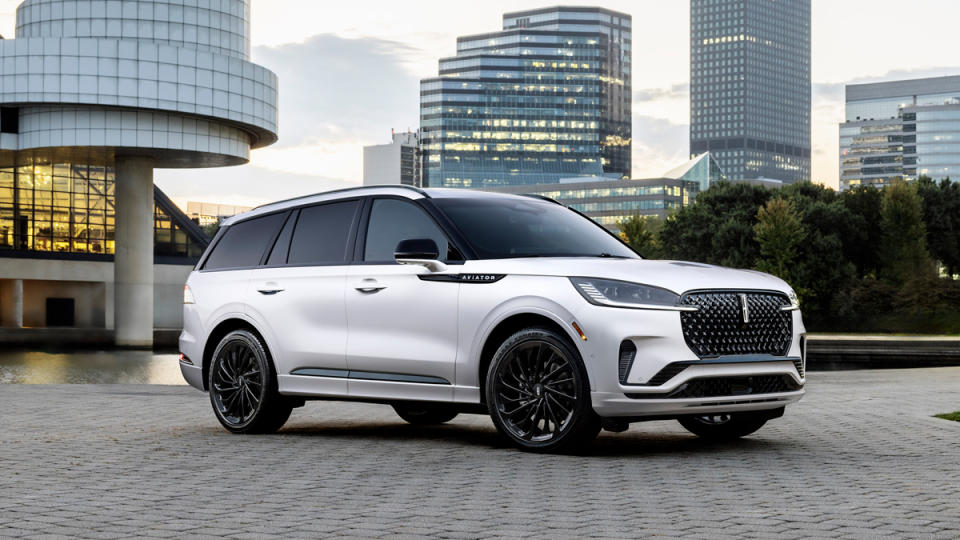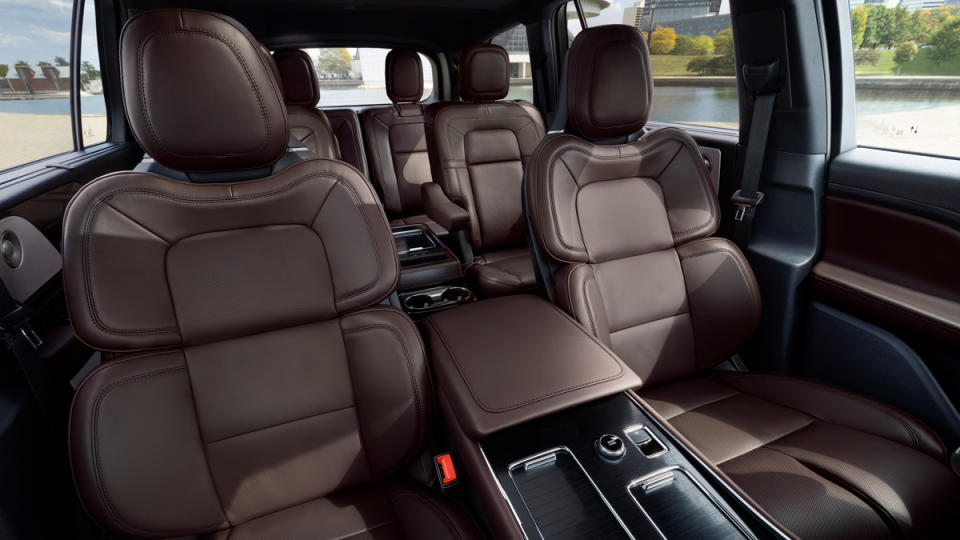The New Lincoln Aviator SUV Will Now Answer Your Questions While You Drive

Lincoln has updated its Aviator model, further refining its look and giving it new technology. The latest iteration of the three-row, midsize SUV includes updates to the grille, the headlamps, and the sequentially animated daytime running lights. But the real news is on the inside, with the introduction of the Lincoln Digital Experience.
Powered by Google’s Android Automotive OS, the Lincoln Digital Experience offers the seamless integration of Google Assistant and Amazon Alexa. With it, users can more easily control multiple functions, with the priority put on voice commands as opposed to dealing with a myriad of menus and buttons.
More from Robb Report
Porsche Just Unveiled Details for the First All-Electric Macan. Here's What We Know.
First Drive: Audi's 2024 SQ8 E-Tron Is Its Most Responsive and Agile All-Electric SUV Yet

To understand the new Aviator’s direction, we harken back to the 2022 debut of Lincoln’s manifesto concept cars, the Star and the L-100. Lincoln designers, led by Kemal Curic, have emphasized a shift in how they think about creating a car. Instead of beginning with the exterior, the studio starts with the cabin. “We’ve shifted to an inside-out approach, designing the user experience first,” said chief design officer Anthony Lo when the concepts were revealed. “We think about the space we want to create and make a summary of all the experiences, from driver, passenger, and so on, and then go backwards and identify the design around that.”

The Aviator interior holds true to Lincoln’s design tenets of wide, horizontal lines that are meant to create a feeling of calm. The touchscreen is larger than before, but looks a bit underwhelming compared to some of the sweeping displays from the competition (such as the one found on Lucid’s new Gravity, for example). Small changes improve convenience, such as the wireless charging pad that sits within a hand’s reach of the driver. The push-button, “piano key” shifter has also been reconfigured, and there’s a new 5.8-inch display for second-row passengers to control climate and media settings.
Four new cabin color schemes are available for “reserve” models, including Harvest Bronze with Onyx black accents, and Hot Chocolate with the same color accents. The Black Label trim package is available with the new “Invitation” theme that includes Onyx black leather upholstery, brandy-colored contrast stitching, and open-pore wood accents from a Khaya tree, a more sustainable alternative to mahogany.

While rival Cadillac has recently announced the forthcoming all-electric Vistiq in the same segment, Lincoln has chosen to stick with a twin-turbocharged 3.0-liter V-6 for the Aviator, an engine producing 400 hp and 415 ft lbs of torque. As before, the model will be available in a choice of either rear-wheel drive or all-wheel drive, and comes equipped with a standard Class III trailer hitch, which enables a maximum towing capacity of 5,000 pounds. Also new on the Aviator is the Ford-developed BlueCruise, a true hands-free driving system that will autonomously steer, brake, accelerate, and change lanes on certain, certified stretches of highway.

Pricing for the new model edition is slightly higher than that of its predecessor, starting at $59,890 for the base Premiere trim while the entry point for the top-tier Black Label trim is $88,390. However, parent-company Ford says the new Aviator also includes more standard features, which it claims accounts for the bump. The 2025 Lincoln Aviator is slated to arrive in dealerships this summer.
Click here for more photos of the 2025 Lincoln Aviator.
Best of Robb Report
Sign up for Robb Report's Newsletter. For the latest news, follow us on Facebook, Twitter, and Instagram.



